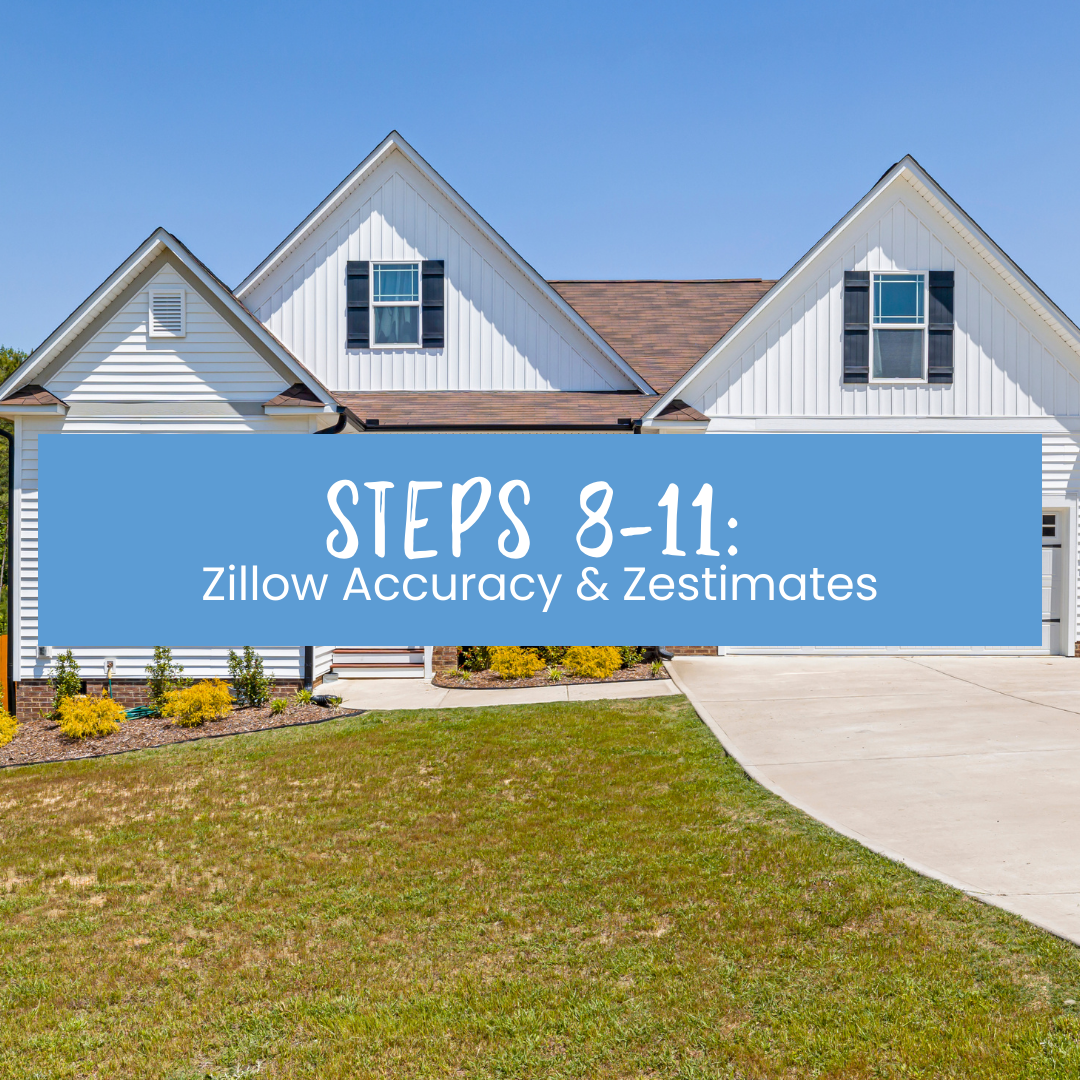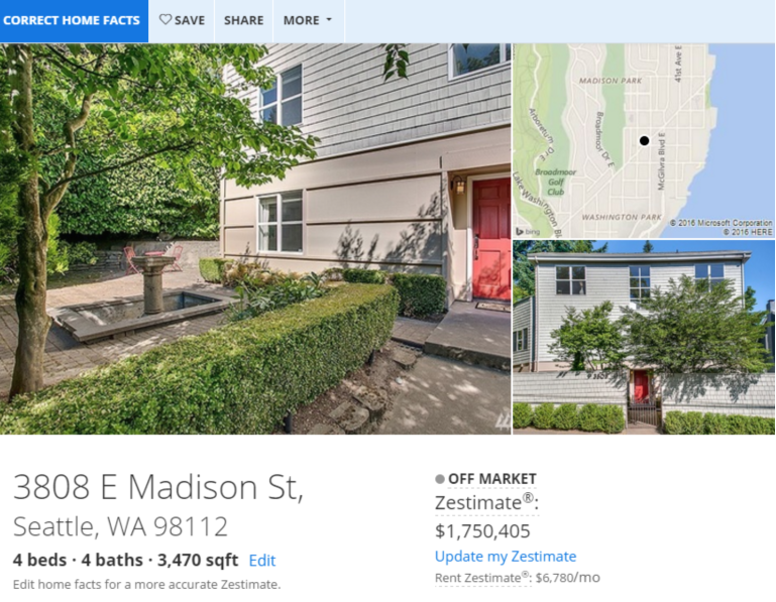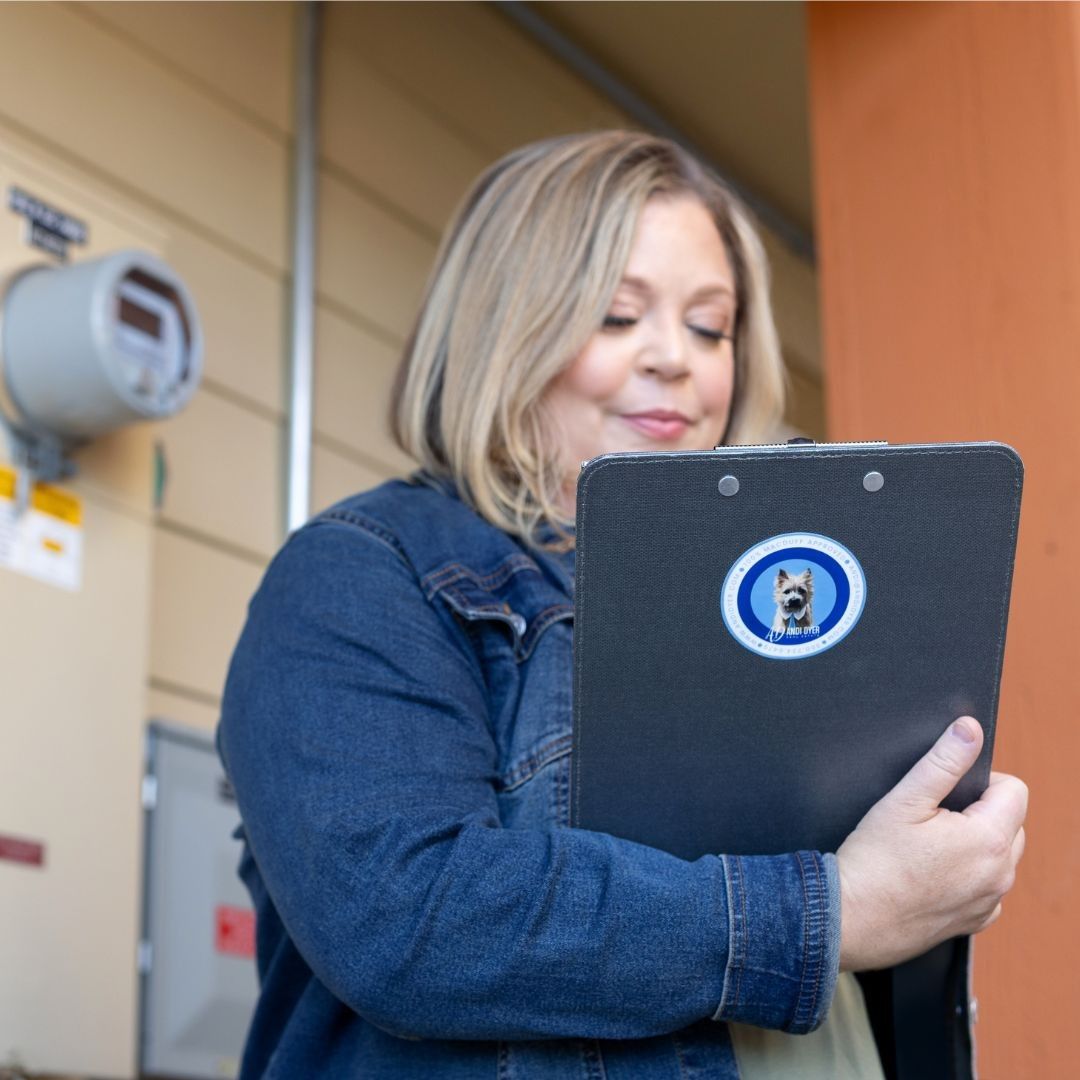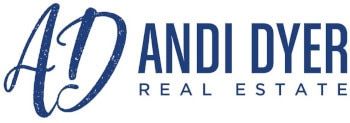Selling Steps 8-11: Zillow Accuracy & Zestimates

Step 8
You see a home on Zillow or the like (we’ll call them portals from here on out) and inquire about its availability with us…and it’s not for sale. You’re looking to sell your home and you LOVE the Zestimate (I don’t need to talk to anyone to find out how much my home is worth; squeeee! And even better my home magically increased in value by $50K in the last two weeks according to Zillow; double squeeee!), yet the number is completely wrong when you talk to a REALTOR®?
Why?
Let’s start with the availability of homes part. The dirty secret about online real estate is that it’s built upon you being a leader. The online real estate world is inaccurate and untrustworthy. Portals don’t care about their data being accurate; they are an advertising website, not a real estate website so there’s no incentive for them to make sure that a home that sold six months ago is changed from active to sold on their website. They just care about getting your contact information, they sell advertising.
Now that you know that the baseline of portals is garbage, let’s move on to estimates of home value. First of all, Zillow itself calls it a “Zestimate,” as in estimate. Zillow has a helpful chart which can be seen below showing that in the Seattle area the Zestimates are off by 9.8% on average. That means on a $500,000 home the Zestimate could say it’s worth either $450,000 or $550,000. That’s a $100K swing in price. Instead, Zillow says it’s a starting point for a pricing discussion. If it’s not even close to accurate, why are you taking these estimates as gospel? Wouldn’t it be called a “Zaccurate” if it was accurate?
So why they aren’t accurate and what are these Zestimates based on?
In Whatcom County, most of their data come from public data derived from the county, city, and state. The problem with this data is that it is out of date, to begin with. Anyone who has lived in Whatcom County for any length of time knows that the data is often inaccurate and this, in part, is what Zestimates are based on.
The portals do not have access to sold home prices – en masse – which adds another layer of inaccuracy to the mess.
The portals then apply an algorithm – a computer program – to these disparate incorrect pieces of data to derive an estimate of value.
How can an accurate price be determined for a home when the data it is based on is out of date and incorrect? It can’t.
So how should the value of a home be determined if you want it to be accurate?
Sold home data – hard dollars spent – in a recent time period on homes that compare to each other is the most important way to determine the current market value of your home. Appraisers only use comps that have sold within the last three months which have a similar number of bedrooms, baths, square footage, and features, and are located within a 1-mile radius of the subject property. This is the reason why the beautiful new construction 3-bedroom single-family home that sold a year ago on your street doesn’t help the value of your 100-year-old 2-bedroom four-flat condo. Only real estate professionals and appraisers have access to this sold data; portals do not.
The condition of your home is a factor. All things being equal, an updated home will be of more value than an identical home in the bedroom, bath, and square footage count no matter how much you love your “charming!” 50-year-old kitchen and asbestos-filled basement.
Whether a neighborhood is appreciating or depreciating in value will affect the price of your home.
Often a Seller’s perceived value of their home and the actual market price are very different numbers. You might be willing to overlook that your home has no AC and that the third bedroom is the size of a storage closet because you think the home has a ton of character which makes it worth the same as a home with Central AC and three large bedrooms, but these issues affect the price whether a Seller wants to admit it or not. This is why determining the fair market value of a home is a mixture of art and NWMLS data. My job as a REALTOR® is to help you determine where the actual market price of your home is based on the accurate information we have at my disposal, not the perceived price based on your emotions.
So, in lieu of talking to us or any other REALTORS®, where can you go for accurate information?
We will send you a link, to my system that is accurate, and an app HomeSpotter which it is integrated with. See a house on Zillow, Trulia, etc. that you like? Look it up on my App or NWMLS to be sure it’s actually available. Our sites are updated constantly. Zillow’s website sometimes has information on it that is 6 months old. In a fast-moving market, this could make or break your buying experience – specifically how much time you waste online.
You’ll need to find every home in your general area and neighborhood which matches your home’s bedroom, bath, square footage, parking, etc. which has sold in the last three months since that is the time frame appraisers use. Then you need to go inside of them (or find recent photos of the interior) to make sure they match your home in terms of quality, condition, and finishes to determine a somewhat accurate value. Or you can pay for an appraisal every year until you’re ready to sell. Or we can generate an NWMLS report of sold homes in your neighborhood for you whenever you’d like, which is free. One tip we do recommend for Sellers is to claim your home on Zillow so you can make the data as accurate as possible.
The bottom line for these and other websites is this: They are nothing, but advertising sites meant to monetize your eyeballs. Next time you log on to a portal such as Zillow and Trulia, look for an ad for a bank, or three-plus Agents (who pay to make it look like it is their listing which it isn’t), or a mortgage person or any of the myriad of advertising partners these companies have. Every time you look up a home as a Buyer or try to ascertain the value of a home as a Seller you’re selling an ad for these people and companies to the tune of multiple millions of dollars every year. They aren’t in the business of accuracy, only your eyes on an ad. Want accuracy? Want to know the market value of your home? Tired of wasting your time online? Give us a shout.
Questions? Contact us at andi@andidyer(dot)com or 360-734-6479.
Step 9
The Zestimate® home valuation model is Zillow’s estimate of a home's market value. The Zestimate incorporates public and user-submitted data, taking into account home facts, location, and market conditions.
It is not an appraisal, and it should be used as a starting point. We encourage Buyers, Sellers, and homeowners to supplement the Zestimate with other research such as visiting the home, getting a professional appraisal of the home, or requesting a comparative market analysis (CMA) from a real estate Agent.
Note: The Zestimate's accuracy is computed by comparing the final sale price to the Zestimate that was published on or just prior to the sale date.

Definitions
MEDIAN ERROR:
The nationwide median error rate for the Zestimate for on-market homes is 1.9%, while the Zestimate for off-market homes has a median error rate of 7.5%. This means that the Zestimates for half of all on-market homes are within 2% of the selling price, and half are not. For most major markets, the Zestimate for on-market homes is within 10% of the final sale price more than 95% of the time.
HOMES WITH ZESTIMATES:
We can only calculate Zestimates for homes and regions where we have certain data, including historical transactions. This column indicates the number of homes in an area that have Zestimates.
WITHIN 5% OF SALE PRICE:
This is the percentage of transactions for which the Zestimate was within 5% of the transaction price.
WITHIN 10% OF SALE PRICE:
This is the percentage of transactions for which the Zestimate was within 10% of the transaction price.
WITHIN 20% OF SALE PRICE:
This is the percentage of transactions for which the Zestimate was within 20% of the transaction price.
Zestimate methods
Zillow publishes Zestimate home valuations for 97.5 million homes across the country and uses millions of statistical and machine-learning models that can examine hundreds of data points for each individual home.
To calculate a Zestimate, Zillow uses a sophisticated and proprietary algorithm that incorporates data from county and tax assessor records and direct feeds from hundreds of multiple listing services and Brokerages. The Zestimate also incorporates a home's facts and features, which homeowners have the ability to update.
The Zestimate accounts for variables like:
- Home characteristics including square footage, location, or the number of bathrooms
- Unique features like hardwood floors, granite countertops, or a landscaped backyard
- On-market data such as listing price, description, comparable homes in the area, and days on the market
- Off-market data — tax assessments, prior sales, and other publicly available records
Currently, we have data for over 110 million U.S. homes and we calculate Zestimates for more than 97.5 million of them.
How accurate is the Zestimate?
The Zestimate’s accuracy depends on location and the availability of data in an area. Some areas have more detailed home information available — such as square footage and the number of bedrooms or bathrooms — and other areas do not. The more data available, the more accurate the Zestimate value will be.
Questions? Contact us at andi@andidyer(dot)com or 360-734-6479.
Step 10
Zillow CEO Spencer Rascoff says Zestimates are “a good starting point” but that nationwide Zestimates have a “median error rate” of about 8%.
When “CBS This Morning” co-host Norah O’Donnell asked the chief executive of Zillow recently about the accuracy of the website’s automated property value estimates — known as Zestimates — she touched on one of the most sensitive perception gaps in American real estate.
Zillow is the most popular online real estate information site, with 73 million unique visitors in December. Along with active listings of properties for sale, it also provides information on houses that are not on the market. You can enter the address or general location in a database of millions of homes and probably pull up key information — square footage, lot size, number of bedrooms and baths, photos, taxes — plus a Zestimate.
Shoppers, sellers and buyers routinely quote Zestimates to real estate agents — and to one another — as gauges of market value. If a house for sale has a Zestimate of $350,000, a buyer might challenge the sellers’ list price of $425,000. Or a seller might demand to know from potential listing brokers why they say a property should sell for just $595,000 when Zillow has it at $685,000.
Disparities like these are daily occurrences and, in the words of one real estate agent who posted on the industry blog ActiveRain, they are “the bane of my existence.” Consumers often take Zestimates “as gospel,” said Tim Freund, an agent with Dilbeck Real Estate in Westlake Village. If either the buyer or the seller won’t budge off Zillow’s estimated value, he told me, “that will kill a deal.”
Back to the question posed by O’Donnell: Are Zestimates accurate? And if they’re off the mark, how far off? Zillow CEO Spencer Rascoff answered that they’re “a good starting point” but that nationwide Zestimates have a “median error rate” of about 8%.
Whoa. That sounds high. On a $500,000 house, that would be a $40,000 disparity — a lot of money on the table — and could create problems. But here’s something Rascoff was not asked about: Localized median error rates on Zestimates sometimes far exceed the national median, which raises the odds that sellers and buyers will have conflicts over pricing. Though it’s not prominently featured on the website, at the bottom of Zillow’s home page in small type is the word “Zestimates.” This section provides helpful background information along with valuation error rates by state and county — some of which are stunners.
For example, in New York County — Manhattan — the median valuation error rate is 19.9%. In Brooklyn, it’s 12.9%. In Somerset County, Md., the rate is an astounding 42%. In some rural counties in California, error rates range as high as 26%. In San Francisco it’s 11.6%. With a median home value of $1,000,800 in San Francisco, according to Zillow estimates as of December, a median error rate at this level translates into a price disparity of $116,093.
Some real estate agents have done their own studies of accuracy levels of Zillow in their local markets.
Last July, Robert Earl, an agent with Choice Homes Team in the Charlottesville, Va., area, examined selling prices and Zestimates of all 21 homes sold that month in the nearby community of Lake Monticello. On 17 sales Zillow overestimated values, including two houses that sold for 61% below the Zestimate.
In Carlsbad, Calif., Jeff Dowler, an agent with Solutions Real Estate, did a similar analysis on sales in two ZIP Codes. He found that Zestimates came in below the selling price 70% of the time, with disparities ranging as high as $70,000. In 25% of the sales, Zestimates were higher than the contract price. In 95% of the cases, he said, “Zestimates were wrong. That does not inspire a lot of confidence, at least not for me.” In a second ZIP Code, Dowler found that 100% of Zestimates were inaccurate and that disparities were as large as $190,000.
So what do you do now that you’ve got the scoop on Zestimate accuracy? Most important, take Rascoff’s advice: Look at them as no more than starting points in pricing discussions with the real authorities on local real estate values — experienced agents and appraisers. Zestimates are hardly gospel — often far from it.
Distributed by Washington Post Writers Group
By KENNETH R. HARNEY
FEB. 8, 2015
Zillow CEO Spencer Rascoff sold home for much less than Zestimate
Clients putting Zestimates on a pedestal? Point them toward this sale
Key Takeaways:
- Agents can demonstrate the Zestimate's shortcomings by showing the discrepancy between the sales price of a home formerly owned by Zilow CEO Spencer Rascoff and its Zestimates.
- Luxury home Zestimates are more likely to be off than others due to 'non-quantifiable facts.'
- Irregular lot sizes or proximity to 'arterial' roads can sometimes throw off Zestimates.
Zillow CEO Spencer Rascoff may have recently given real estate agents a gift they won’t soon forget: a sure-fire way to show that Zestimates can miss by a mile.
How? By selling a property for much less than its Zestimate.
On February 29, Rascoff sold a Seattle home for $1.05 million, 40 percent less than the Zestimate of $1.75 million shown on its property page a day later.
The gap between the Zestimate of Rascoff’s former property and its sales price has decreased only modestly since then.
Zillow readily acknowledges that Zestimates can be inaccurate, but some consumers can still take them at face value, causing headaches for agents. Here is an example that shows $1.75 million Zestimate of property formerly owned by Spencer Rascoff the day after the home sold for $1.05 million

Citing the chasm between the sales price of Rascoff’s former home and the property’s Zestimate may be one way for real estate professionals to show clients that Zestimates are, as Zillow says, only a conversation starter for pricing a home, not the final word on its value.
Philip Gray, a San Leandro, California-based appraiser, is taking this approach. Bringing up the Zestimate of the property Rascoff recently offloaded will help him deal with the frequent pushback he receives from homeowners “who think Zillow is the magic 8-ball,” he said.
‘We missed’
Zillow Chief Analytics Officer Stan Humphries said estimates on Rascoff’s former home have certainly overstated the property’s value.
“The fact that we missed and there are empirical reasons we missed — that’s a great conversation that real estate agents should have” with consumers, he said, citing the property’s irregular lot and location on a busy road as partly responsible for its Zestimate’s inaccuracy.
But he expressed hope that, in the same discussion, agents also won’t instill “data nihilism” in consumers, and that they acknowledge that humans also can miss the mark.
Smaller gap at start
In July, the Zestimate of Rascoff’s former property wouldn’t have raised the eyebrows of anyone who’s familiar with automated valuation models (AVMs). At $1.388 million, the property’s Zestimate was 7.3 percent higher than its listing price of $1.295 million at the time.
Since Zillow only shows revised historical Zestimate data on property pages, the home’s property page currently indicates that the property’s Zestimate was around $1.6 million in July 2015, somewhere in the neighborhood of $200,000 more than the Zestimate that actually appeared on its property page on July 17, 2015.
For all anyone knew in July 2015, the property might have eventually sold at a price closer to its Zestimate than its listing price.
But that didn’t happen. The home later sold for $1.05 million, 19 percent below its July listing price. Undergoing a number of price cuts, the property was listed and de-listed several times between when it was originally listed on July 7, 2015 and when it sold on February 29, 2016.
If Rascoff thought his home was worth its July listing price, the outcome of the sale might have come as a disappointment. But if the success of the transaction were judged by the property’s Zestimate, it was a failure.
The home’s Zestimate was $1,750,405 on March 1, the day after the property sold for $1,050,000.
If that Zestimate were accurate, it would mean the chief of the biggest name in real estate and the recent co-author of a book about “the new rules of real estate” would have sold his home for 40 percent less than it was worth.
Automated valuations vary
In addition to highlighting the shortcomings of Zestimates, the Zestimate of Rascoff’s home also brings into focus the potential for some automated valuations to be more accurate than others.
Unlike Zillow’s property page on the home the day after it sold, Redfin’s page on the home showed that the sale had occurred. At the time, it displayed a valuation of $1.1 million — much closer to the property’s sales price of $1.05 million.
Below is an example of a Redfin property page of Rascoff’s former property, which shows a home value estimate of $1.1 million the day after it sold.

On Thursday, May 5, Redfin’s estimate of the home’s value was $1.3 million.
So while Zillow’s estimate had come down by around $140,000 since the home sold, Redfin’s had increased by about $200,000. Both differed from the price the home sold for a little over two months ago by hundreds of thousands of dollars.
Zillow has since added the sales price of Rascoff’s former home to its property page.
The property’s Zestimate had slipped from $1,750,405 the day after it sold to $1,608,670 on May 5, but its Zestimate on May 5 still only represented 65 percent of what the home sold for a little over two months before.
To judge the Zestimate’s accuracy based solely on the gap between the sales price of Rascoff’s former home and its Zestimate would probably be unfair. The discrepancy is unusually wide, according to what Zillow says is the Zestimate’s median error rate.
Zillow puts the Zestimate’s national median error rate at 7.9 percent, meaning half of Zestimates nationwide are within 7.9 percent of a home’s sales price and half are off by more than 7.9 percent. The listing portal claims an even higher level of accuracy in Seattle, where Rascoff’s former home is located.
There, Zestimates for half of homes are supposed to be within 6.1 percent of their sales price, while half are supposed to be off by more than 6.1 percent. This suggests that the Zestimate of Rascoff’s home missed by much more than normal in Seattle.
Why was that?
One reason is that the home’s Zestimate was comparing Rascoff’s former home, which is located on a triangular lot, to recently sold homes located on rectangular lots, according to Humphries.
Since rectangular lots provide more utility than triangular lots, he said, that meant the Zestimate was overvaluing the plot of Rascoff’s home.
Another reason was that Rascoff’s home was located on an “arterial” road while nearby recently sold homes sat on quieter streets.
Zillow continues to research how to program Zestimates to account for such factors, but “we haven’t fully cracked the nut on that one” yet, Humphries said.
‘The classic luxury homes problem’
Zillow Senior Economist Skylar Olsen added that the Zestimate of Rascoff’s home represents “the classic luxury homes problem.”
Zestimates can’t take into account “non-quantifiable facts,” such as layout design or lighting, and these facts can have much more of an effect on the values of luxury homes than less expensive properties, she said.
Real estate agents can see how special features impact a property’s value, but the “Zestimate algorithm can’t know” and “at this point in time, it’s not designed to know,” she said.
The reason why the Zestimate of Rascoff’s former property hasn’t dropped dramatically since selling at a much lower price than Zestimates leading up to the sale is that the Zestimates have a “smoothing function” designed to keep them from overreacting to recent property sales.
The Zestimate on the Rascoff’s former property will gradually come down to more closely resemble its sales price. And upcoming updates to the Zestimate’s algorithms will adjust the smoothing function so that the Zestimate of a home that sells will come to more closely mirror its sales price much faster.
Also worth noting is that Zillow does not have access to sold listing data from the Northwest Multiple Listing Service, the MLS that covers Seattle. Automated valuation models (AVMs) that crunch sold MLS data can have an advantage over AVMs that only use public sales records — which are the only sales records used by Zestimates covering Seattle.
While Zillow says on its website that most consumers understand that Zestimates truly are only estimates, the listing portal concedes that, sometimes, “someone will come along that insists on setting the price they are willing to buy or sell for based solely on the Zestimate.”
Zillow goes on to say that “education is the key” and that, armed with knowledge of how Zestimates are calculated along with their local median error rate, agents can explain “why the Zestimate is a good starting point as well as a historical reference, but it should not be used for pricing a home.”
While Zestimates can create hassles for agents, some agents would certainly agree with Zillow’s assertion that understanding how a Zestimate is calculated, along with its strengths and weaknesses, “can provide the real estate pro with an opportunity to demonstrate their expertise.”
The gap between the Zestimate of Rascoff’s former property and its sales price may have made it easier for agents to seize that opportunity.
Zillow’s Humphries’ hopes that, when putting Zestimates in perspective for consumers, agents will also acknowledge that Zestimates do have a scientific basis, and that nobody’s perfect — even trained professionals.
He noted that a study released by Zillow in 2012 showed that the typical gap between a home’s Zestimate and its sales price wasn’t that much larger than the typical gap between a home’s initial list price — which is often set based on a real estate agent’s recommendation — and its sales price.
“We acknowledge humans are great at this, and we’re great too — but they’re greater,” Humphries said.
BY TEKE WIGGIN
May 18, 2016
Questions? Contact us at andi@andidyer(dot)com or 360-734-6479.
Step 11
Did you know that more than 43,000,000 homeowners have claimed their homes on Zillow?
That’s right — 43 million.
As a real estate professional, this is important information for you to know because it can be of great value when working with local and out-of-area prospects and clients on Zillow.
It’s really simple. Here’s how to claim your home:
Step 1: Go to Zillow and log in to your account
Step 2: Type in your address, city, and state to find the home
Step 3: Select “More” and choose the “Claim This Home” link
Step 4: Answer and complete the owner verification process
Step 5: Begin using the special features and tools available
You are now free to customize your home’s property details page to your liking.
Homeowners are bringing their properties to life by adding a description and some photos. They like to contribute neighborhood information and what they love best about their home or the community. Some will share and discuss home features while others will share location benefits and local demographics.
Now that you’ve claimed your home, here’s what you can do:
Edit Home Facts
Since Zillow gets lots of data from public records, some home facts may occasionally be outdated or incorrect. Set the record straight by editing the home facts. This is a powerful feature that many owners have discovered, but many agents don’t know about.
We start owners off with our Zestimate™ home valuation, but you can show them how to fine-tune it by creating their own estimate and by adding information such as updated interior/exterior or a remodel. You can even provide them with a CMA or show them where to add an appraisal.
As a real estate professional, having this information and knowledge is powerful. It shows consumers that YOU are the expert on Zillow and that you know your stuff. Best of all, having and sharing this knowledge just might be why they will choose to work with you and to represent them.
Have you claimed your home on Zillow? Type your address, and claim it today, then you can show others when the time is right, or the opportunity arises.
Questions? Contact us at andi@andidyer(dot)com or 360-734-6479.

















